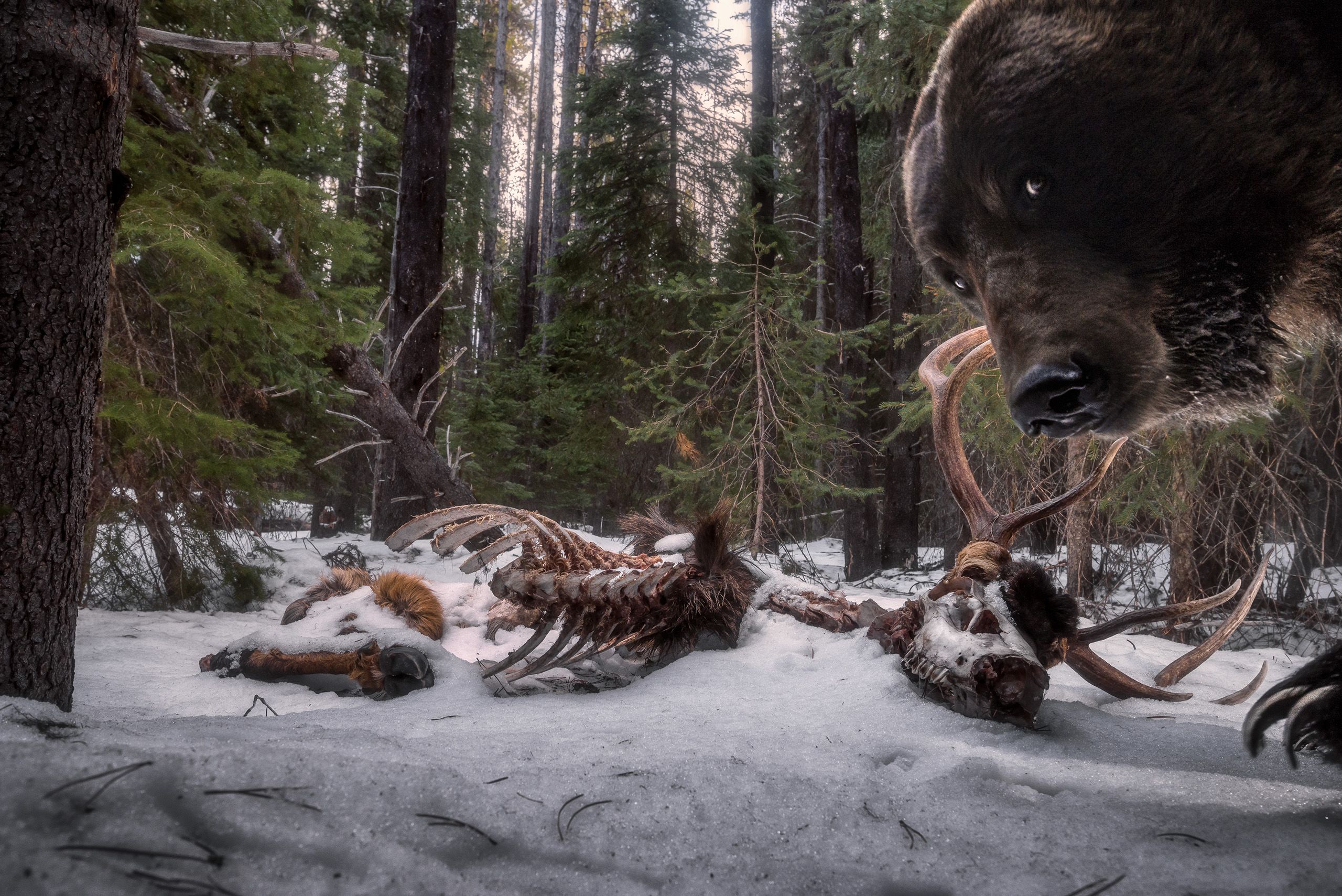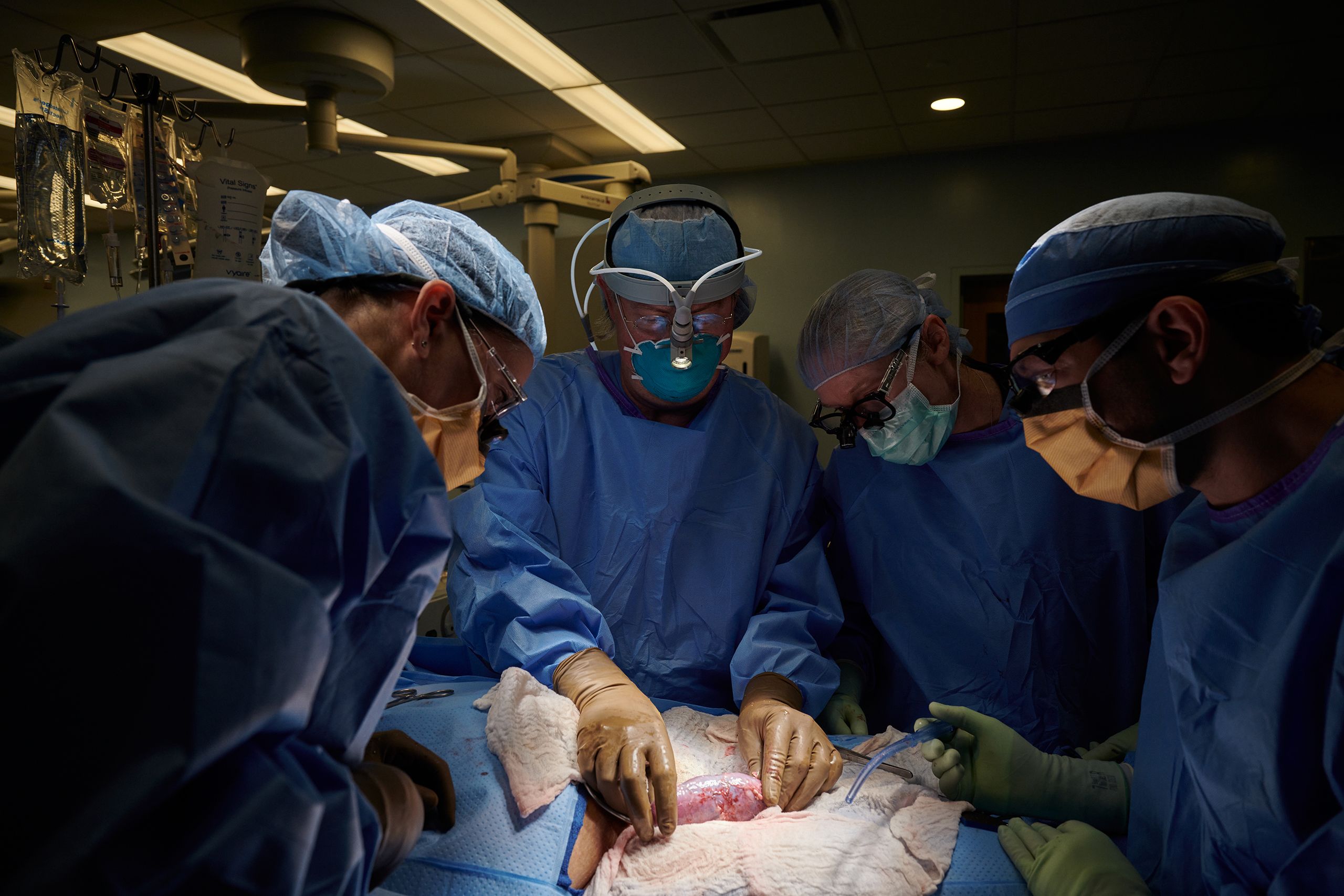Water bear fossil and grizzly bear selfie — October’s best science images
The month’s sharpest science shots, selected by Nature’s photo team.

Grizzly remains. When photographer Zack Clothier came to check on his carefully positioned woodland camera trap, he found his set-up trashed and covered in bear slobber. The last frame it captured: a large grizzly bear looking directly into the lens. Clothier had set up the camera months earlier, hoping to snap a wolf feeding on an elk carcass he came across while cross-country skiing near his home in Montana. “In my many years of camera trapping, one thing I’ve learned is that bears have a way of ‘disabling’ the camera while at the same time never having their picture taken,” he wrote in a blog post about the photo. “My jaw literally dropped when I came across this chilling image”. The shot won the ‘animals in their environment’ category at the 2021 Wildlife Photographer of the Year awards.

Credit: Joe Carrotta/NYU Langone Health
Credit: Joe Carrotta/NYU Langone Health
Transplant breakthrough. For the first time, surgeons successfully transplanted a kidney from a gene-edited pig to a person, who was brain-dead and on life support. The surfaces of the pig cells were engineered to lack a sugar molecule known as alpha-gal, which would trigger an immediate human immune response. The 2-hour procedure was a success: when surgeons temporarily connected the pig kidney to the recipient’s blood vessels, it functioned normally and was not rejected by the person’s immune system. Similar tests had been done before in non-human primates, and pig heart valves are already widely used in people. It is hoped that engineered pigs could one day provide a solution to shortages of donated organs.

Mars rehearsal. Six astronauts from Europe and Israel embarked on a three-week-long mission in Israel’s Negev desert to simulate life on Mars. The team lived in a tented structure that simulates an off-site station, and was directed by a mission support centre in Austria. While outside, the astronauts had to wear spacesuits as though on the surface of Mars. As well as testing equipment including drones and wind- and solar-powered mapping vehicles, the mission aims to study the effects of isolation on any astronauts who might one day journey to the red planet.

Credit: Esri Inc and The Cabildo de La Palma
Credit: Esri Inc and The Cabildo de La Palma
La Palma lava. Drone footage shows the scale of devastation following the eruption of the Cumbre Vieja volcano on the Spanish island of La Palma. Vast amounts of lava began oozing out of the volcano in mid-September, burying everything in its path as it flowed all the way to the island’s west coast. The lava eventually spilled over the cliffs and into the Atlantic Ocean, creating a ‘low island’ more than half a kilometre wide, according to Spain's National Research Council.

Water-bear fossil. This tiny tardigrade has been preserved in a chunk of Dominican amber for 16 million years. Researchers were studying the fragment for months before spotting the half-millimetre-long creature in a corner. The discovery is “truly a once-in-a-generation event”, said Phil Barden, an entomologist at the New Jersey Institute of Technology in Newark. It is only the third fossilized tardigrade to be found, and the first from the Cenozoic, the current geological era. Tardigrades, also called water bears or moss piglets, are known for their ability to survive extreme heat, radiation and even the vacuum of outer space. The fossil specimen — a genus and species new to science — has been formally named Paradoryphoribius chronocaribbeus.

Slick operation. Biologists survey biodiversity in the tide pools at California’s Little Corona del Mar beach, following a massive oil spill nearby. An estimated 480,000 litres of heavy crude oil leaked from a broken underwater pipe, forming a slick on the surface of the water and leaving Orange County beaches awash with thick black oil and tar. The area is home to some threatened species, including humpback whales and birds such as snowy plovers and California least terns. Researchers have collected sand and water samples from affected beaches and are investigating the spill’s ecological impacts.
Bacterial close-up. Researchers have imaged the surface of an Escherichia coli bacterium in unprecedented detail, revealing flaws in its protective outer membrane. The densely packed network of proteins on the surface is interrupted by smoother, protein-free patches. These weak spots are like chinks in the bacteria’s armour that could one day be exploited by new antibiotics.

Credit: Benn et al./UCL
Credit: Benn et al./UCL


Credit: PA Images/Alamy
Credit: PA Images/Alamy
Honouring Henrietta. A life-size bronze statue of Henrietta Lacks, a Black woman whose unknowing donation of cancer tissue gave rise to the historic ‘HeLa’ cell line, was unveiled in Bristol, UK, on 4 October by members of her family to honour the 70th anniversary of her cells first being used. “She has saved lives and given to countless people around the world,” said Lacks’s granddaughter, Jeri Lacks-Whye, at the unveiling. Lacks’s cells were taken without her knowledge or permission as she underwent cancer treatment in 1951. They gave rise to the first immortal human cell line, HeLa, which is used for research into almost every disease. The statue was commissioned by the University of Bristol and is the work of UK artist Helen Wilson-Roe. The inscription on its base reads: “More than a cell”.